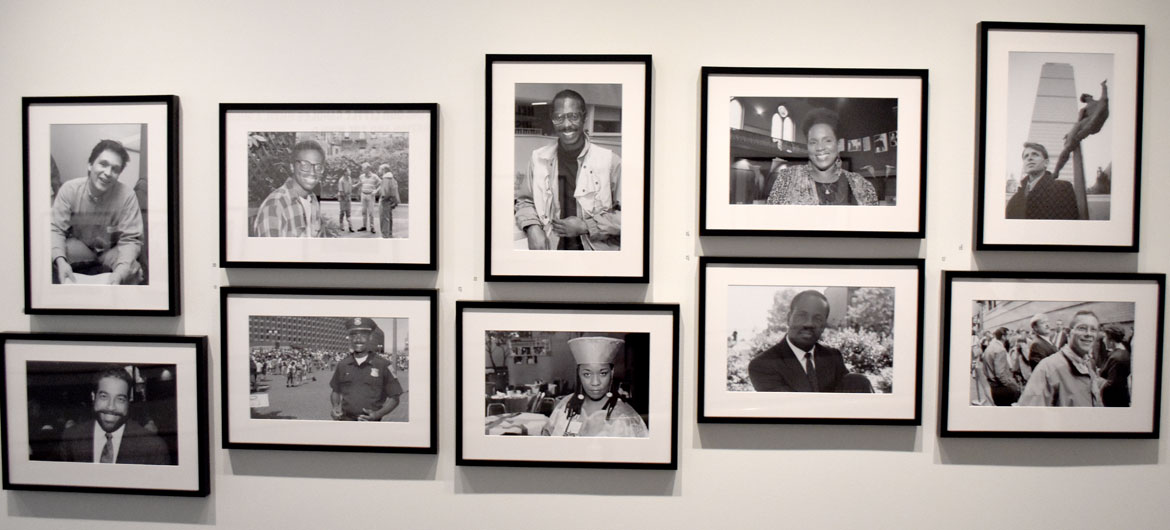In the 1990s, when Boston photographer Craig Bailey began taking the portraits that would become “The Faces of AIDS”—10 black and white photos on view at Medicine Wheel in Boston through July 1, 2019—they were just photos of friends and colleagues.
“The older folks, I didn’t have any idea [that they had AIDS]. These were my friends doing this work,” Bailey says. “We were all just out doing what we do, doing our work and enjoying it.”
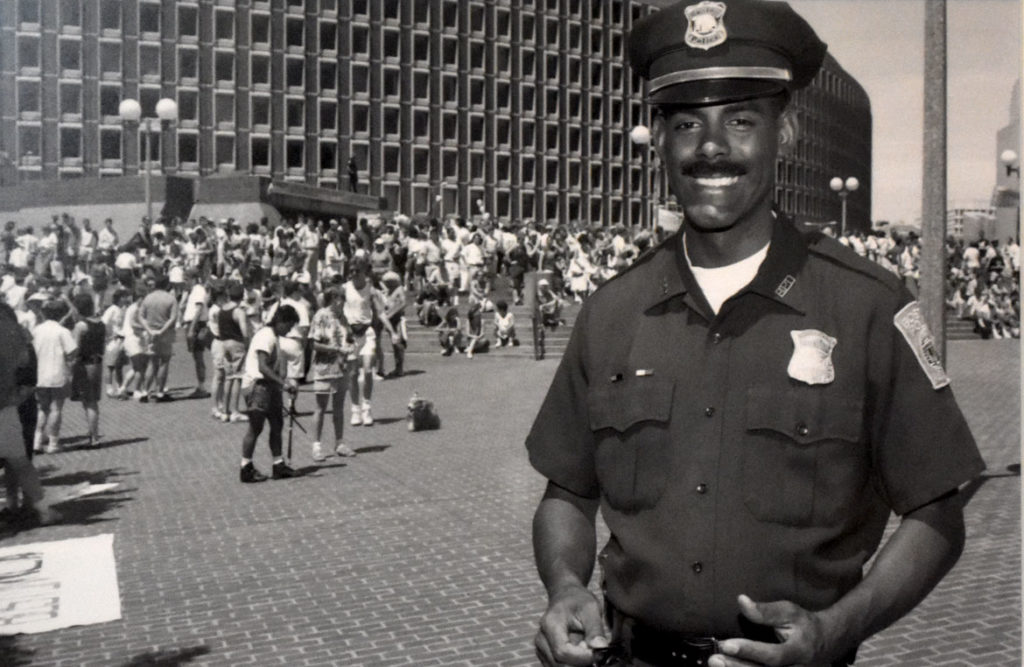
There’s a photo of Boston Police officer Robert-Ian Schlesinger on duty, smiling, around 1993, at Pride Day on Boston City Hall Plaza. “I had no idea” that he had AIDS. “All I knew was I had a crush on him,” Bailey recalls. The Boston Globe had written about Robert, but “They had this horrible photo of him.” Then Bailey met him in real life at a community meeting: “gorgeous.”
Schlesinger had been a Marine before serving in the Boston Police Department’s Mounted Unit and later its Community Disorders Unit, investigating hate crimes. Norman Hill, who followed Schlesinger in the liaison position, wrote of Schlesinger for a 1997 exhibition of the portraits: “This venue inspired one of his greatest acts of courage—he came out of the closet, announcing to the Department that he was gay. He was then appointed to be the Boston Police Department’s first openly gay liaison to the gay and lesbian community, tirelessly advocating for gay and lesbian civil rights. … Robert was a trailblazer—he cleared the trail of intolerances and injustice within the halls of our police department.”
For the 1997 exhibition, Catherine Joseph wrote for David Johnson’s portrait: “A few days before David died, he called me up and said, ‘You know, the doctor says I only have a few more days to live, as my heart can’t take it anymore. I’ll probably go during one of my dialysis sessions.’ I was paralyzed with fear and foreboding. … I felt powerless to control the fires that determined my friend’s death.”
There’s a commissioned portrait of Wayne Wright. “Wayne was a good friend,” Bailey says and then sighs. “And formerly director of the Multicultural AIDS Coalition. We didn’t find out about his status until Wayne was hospitalized right before his death. He had cancer. One of the nosy people in our group read his chart and found out. We just never knew.”
And this is part of what makes the photo series standout. These aren’t grim photos of victims on their death beds. These are portraits of friends, most of them smiling. This is before, when they were still healthy, still in their prime.
“The Faces of AIDS,” Bailey says, “wasn’t a project. It came out of that point in time and looking around. I thought I had not been affected by this. … Surprise, yes, you were.”
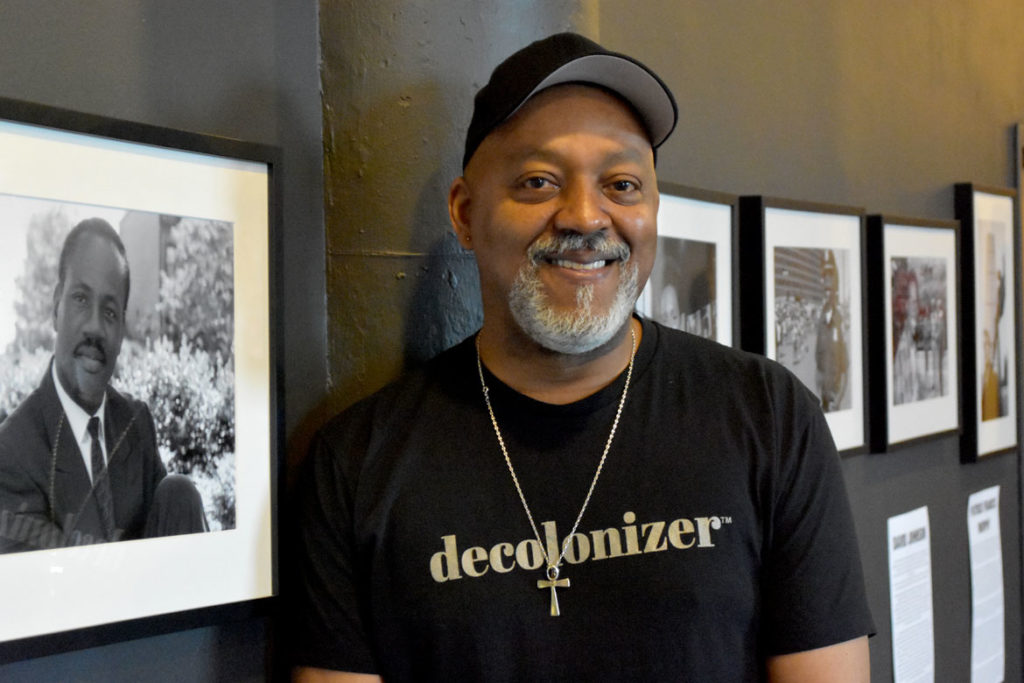
Bailey is a “kid from the projects.” He grew up in New York City’s Baisley Park Houses, living with his mom. “I’ve never had money.” After studying business in college, he landed a job as a customer service rep in the Boston suburbs for an auto manufacturer and moved outside Boston in 1982. When the company offered him a buyout in 1989, he decided to “Let me do a reboot here. … I’m going to move to Boston to be with the freaks and the weirdoes.”
With the buyout, Bailey pursued photography in earnest. He studied with Cambridge photographer Jeff Dunn at Boston Center for Adult Education and then became Dunn’s assistant for a time—learning how to print photos in a dark room, learning the ins and outs of the business. Bailey began photographing for nonprofits (“basically giving the work away”) and for Byron Rushing’s 1990 state representative campaign. (These days, he mainly makes his living photographing events and theatrical performances.)
Bailey took jobs on the side to supplement his limited photography income. “A lot of the community work was directly about or certainly included AIDS education. A lot of these people I met through the community outreach. They were friends. They were colleagues. They were extended family,” he says. He met many of them at AIDS Action Committee’s annual Bayard Rustin Community Breakfast in the early 1990s.
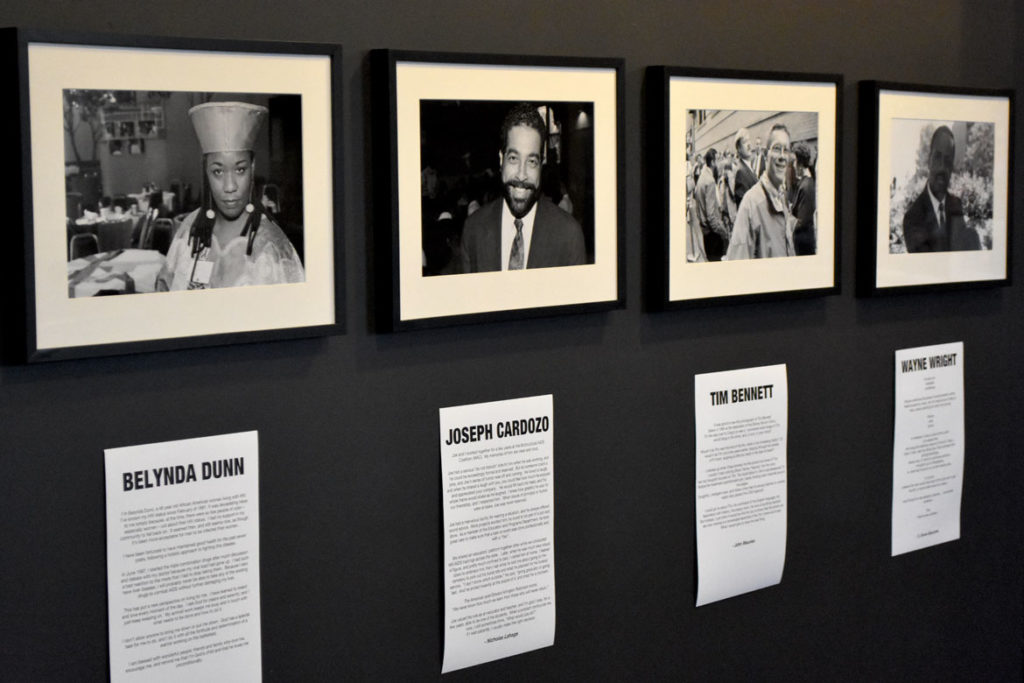
Bailey recalls, “In the early ’80s, that was the first, second, third wave of these [AIDS] deaths. At this point in time, they had come out with AZT and the cocktail. So it seemed like things were getting progressing. It was getting a little bit better as far as treatment and people being able to live a while longer.”
Bailey photographed the portraits in “Faces of AIDS” between 1990 and ’97. “At this moment in time, it was the later part of all-hands-on-deck. I felt I had missed that moment of death personally. People were talking about how they had lost all their friends. I guess I’m lucky I’ve lost only a few. And then there was this wave. Woosh. All gone.”
“It just kind of blindsided me a little bit,” Bailey says. “Like Sidney [Borum Jr.] was a good friend. We had been hanging out. He had been coping with various illnesses and challenges. Then there was a time when I was trying to get him on the phone. I wasn’t understanding. Then I found out he had died. I was like, ‘What? We were just hanging out. He was okay.'”
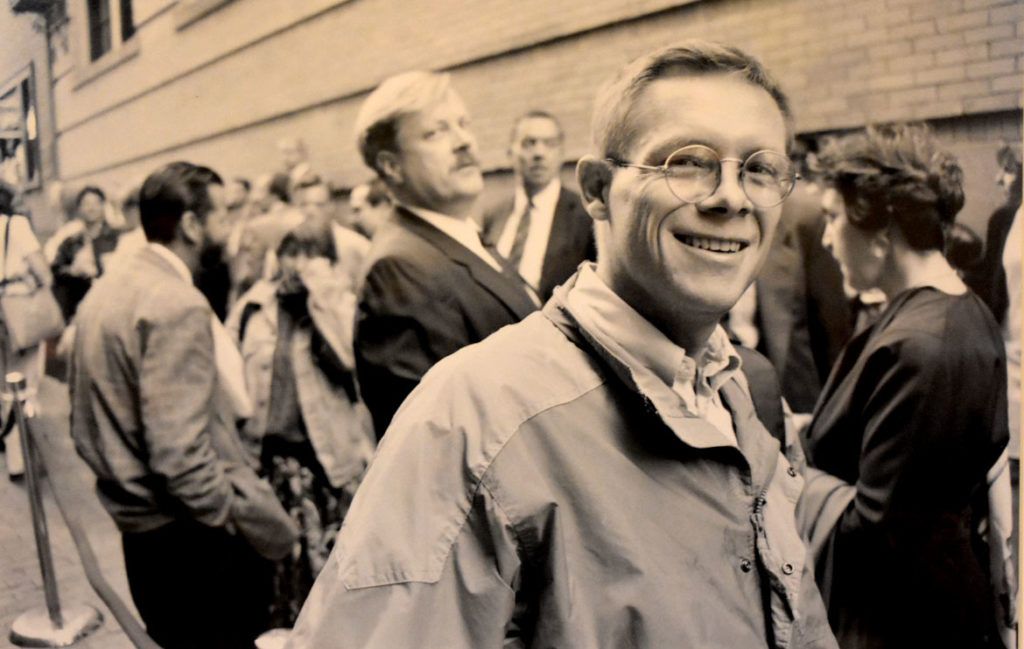
Bailey says, “Other people see it as an exhibition. I see it as my friends that I lost on the wall. It’s hard for me.” He originally exhibited the photos in 1997 at Cambridge Center for Adult Education. At the time, the photos of Belynda Dunn and Patrick Francis Murphy were in color to indicate that they were still alive. “They both wrote their own texts to go with the images. The other texts were written by friends or associates.”
Dunn, then 46, wrote, “I’ve known my HIV status since February of 1991. It was devastating news to me simply because, at the time, there were so few people of color—especially women—out about their HIV status. I had no support in my community to fall back on. It seemed then, and still seems now, as though it’s been more acceptable for men to be infected than women.”
Murphy recalled getting tested for the disease in 1985: “I was in the highest risk category. I didn’t give much thought to the test until the news came of a positive result. OK, no problem, I thought. I’ll just wash it out of my body and mind with lots of drugs, booze, recklessness and denial. And a bit of self pity. That always seemed to work. … Well, none of it did—and never will. … It inspired me to begin a first-of-its-kind wish granting foundation (For The Love of Life) for people and families who are living with the virus. I decided to get on with life because I had a lot of living to do.”
In 1997, Bailey says, “It was a lot closer to the time where people had died. It was just a way of continuing the conservation about the impact, about recognizing the amazing people we had lost to AIDS, and just honoring their memories.”
After the 1997 exhibition, Bailey says, “I put it up on the shelf.” He stored the matted photos in a closet in his South End apartment. “Literally out of sight, out of mind. I know it’s there. Don’t need to take it out and look at it. I did take pieces out here and there. It’s just too traumatic.”
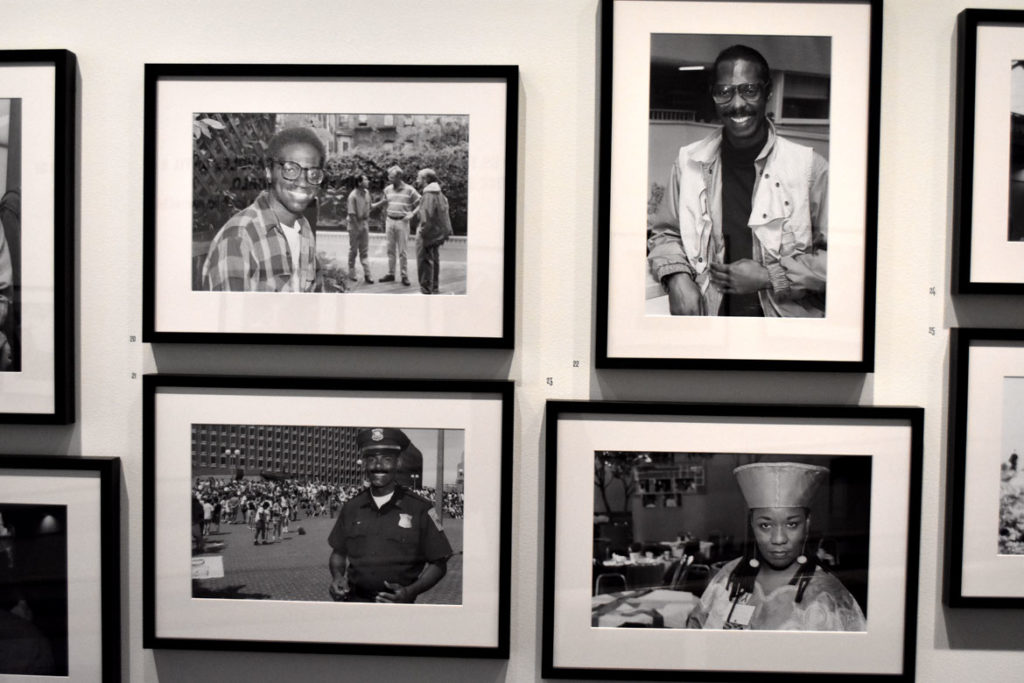
So Bailey didn’t publicly exhibit the photos between 1997 and last fall, when they were featured in “Nine Moments for Now” at the Cooper Gallery at Harvard University’s Hutchins Center in Cambridge. Artist, curator and activist Kathleen Bitetti remembered and promoted Bailey’s photos, encouraging artist and Harvard curator Dell Hamilton to check them out. Harvard made new prints from his old negatives. Then Bitetti arranged the current Medicine Wheel exhibition.
Bailey says, “It’s just very profound and humbling to see how it resonates with people. It’s a reminder to me that you can’t take it and sit on it because it makes you uncomfortable or it’s imperfect or whatever. It transcends the limitations I have imposed on it. … It’s a reminder that it’s not about me.”
AIDS “is still here. This is still an issue,” the 61-year-old photographer says. He hopes the photos “remind people of the impact of AIDS at that point in time and how it decimated a number of communities with amazing bright incredible people who were doing incredible work. We have suffered tremendous losses. We have lost people who had incredible abilities and capabilities that were unique. You don’t necessarily get that back.”
Bailey says, “At this point in time, young people don’t know the impact of the trauma of the initial wave of this and some of them are of the opinion that this is a manageable chronic condition. But you don’t know the reality of that. It’s easy to say. I imagine there’s a generation of people who don’t know what it’s like to have intimate relationships without a condom. What about spontaneity?”
How did Bailey survive the dying years? “By the grace of God,” he says. “Another thing from that time—just abject fear. They were saying into this century that the incubation was 10 years. I knew what I’d done. I knew what I shouldn’t have done.” Many times he thought to himself, “Oh, my God, how am I still alive?”
If this is the kind of coverage of arts, cultures and activisms you appreciate, please support Wonderland by contributing to Wonderland on Patreon. And sign up for our free, weekly newsletter so that you don’t miss any of our reporting.
